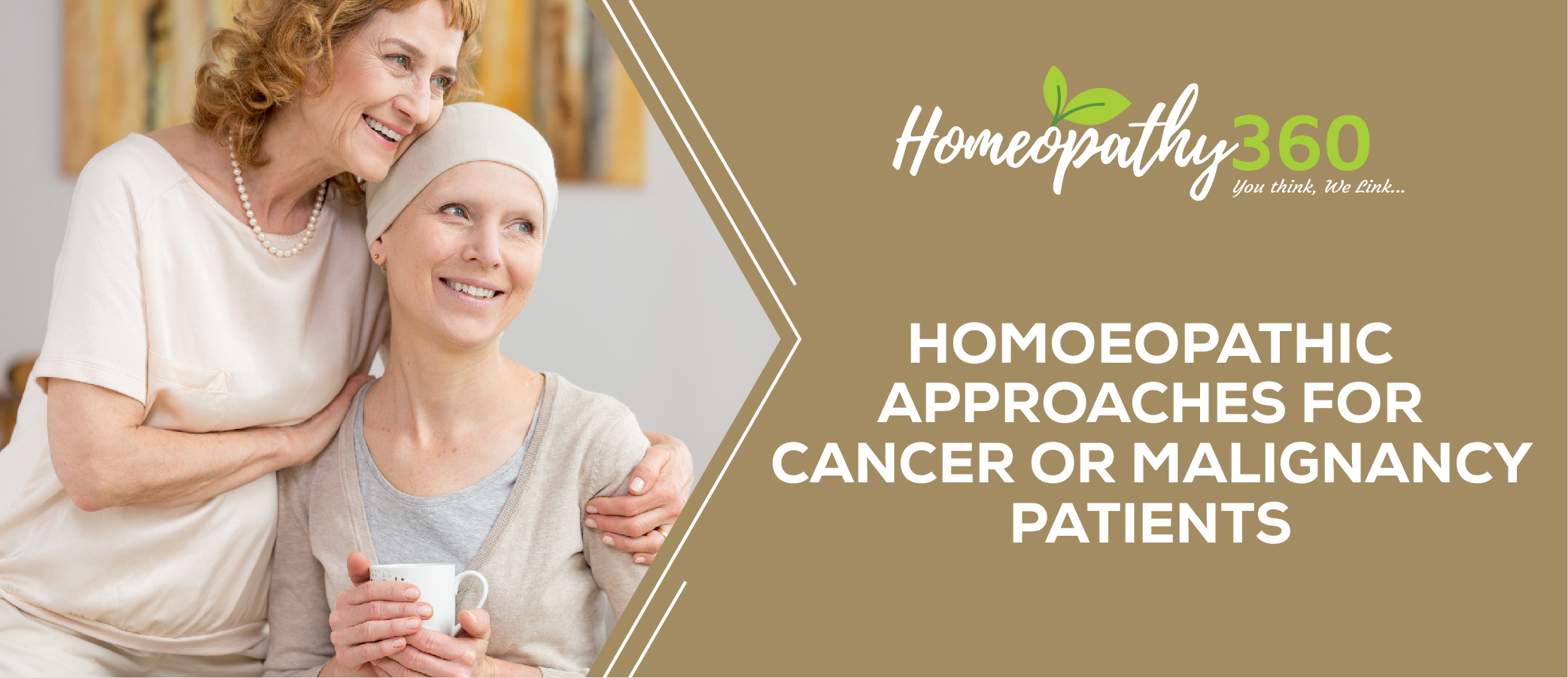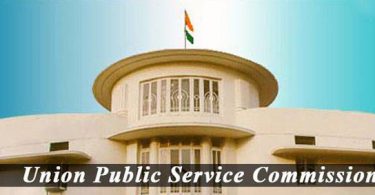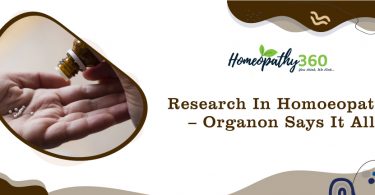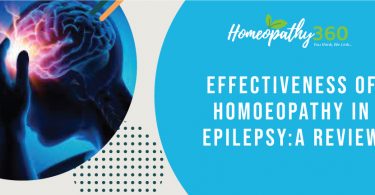
Abstract
Many cancer patients use homoeopathic approaches to increase their body’s ability to fight cancer, improve their physical and emotional well-being, and alleviate their pain resulting from the disease or conventional treatments. Homoeopathy has always been highly controversial due to no proven plausible mode of action for these highly diluted remedies. The aim of this systematic review is to summarise and critically evaluate the efficacy of homoeopathic remedies used as a sole or additional therapy in cancer care.
Introduction
Cancer or malignancy has a unique but indeed repulsive status among maladies that affect the society. There are a numerous reasons for this, as discussed below.
Firstly, it is the stigma attached with it. Unlike other potentially fatal diseases, it destroys the self confidence of the person affected by it to such an extent that there will be a permanent change in the self image of the patient. Even though cancer is only the second leading cause of death after heart diseases there is much difference between the self images of a patient with a cured cancer and a cured myocardial ischaemia[1].
The second reason lies in the peculiar pathophysiology of cancer. As it is known that most of the diseases occur because the specialised cells in the body fail to perform their assigned tasks. Whereas cancer takes this malfunction a little further. In cancer, not only there is a failure of the cells to maintain their specialised function, but also the cells strike out on their own. The cancer cell competes to survive using natural mutability and natural selection to seek advantage over normal cells as in a replay of the evolution. The result of this traitorous behaviour of cancer cells is that the patient feels betrayed by his or her own body. These patients feel that they are the diseased ones rather than just a body part or organ of theirs[2].
The third reason is the quality of cancer for metastasis. By this process, the cancer cells spread far and wide, in many instances, getting out of control of the treatment team and in a good number of cases springing up a surprise attack where one least expects.
All these make cancer the most dreaded one among all diseases, not only to common public but even to learned physicians despite the fact that modern advancements in medicine has made two out of three cancers curable, to some extent.
Prevention of cancer
Nowadays, more stress is given at preventing cancer. The knowledge of carcinogenesis has given many tools for this. Carcinogenesis is not simply an event or a point in the history of the patient but rather a process, an evolution of discrete cellular changes over a period of time resulting in more and more autonomy in cellular activities. These ultimately end up in the breaking out of cancer that we perceive[1]. Thus, prevention emphasises the identification and manipulation of these genetic, biologic, and environmental factors in the cascade that is the causal pathway of cancer. Following is a brief description of the steps practised in cancer prevention at present.
Health education and healthy habits
Undoubtedly, public education is the number one step in cancer prevention as in any other diseases. Awareness on the avoidance of identified risk factors and encouraging healthy habits not only among risk groups but in common public too contributes much to cancer prevention and its control. The general physician is a powerful messenger in this campaign as they are the primary as well as the most frequent contact point for the public. The physician can effectively educate patients about the avoidable health hazards like smoking or exposure to sun and promote the benefits of a healthy lifestyle (including diet, exercise, etc). They can also advocate the use of and administer proven cancer screening methods as well as advise patients regarding possible methods for prophylaxis of cancer[3].
Cessation of smoking
This gives more benefits than any other single step in cancer prevention. It does not much affect the incidence of recurrence in patients who had lung cancer once. But stopping smoking significantly reduces the chances of lung cancer in those who are not yet affected by it. Reducing and terminating the use of other tobacco products also help to reduce the incidence of many oropharyngeal cancers.
Increasing physical activity
Exercise and other physical activity seem to have a good role in preventing many cancers. For example it is evident that increased physical activity is associated with a decreased risk of colon and breast cancer. This result is obtained by a moderate physical activity for about 20 minutes, three to four times a week, even though the exact reason for this is not fully explained satisfactorily.
Diet modification
It is well established that a high fibre diet helps in preventing many cancers especially that of colon. Besides international epidemiologic studies suggests that diets high in fat are associated with increased risk for cancers of the breast, colon, prostate, and endometrium. Another finding is that foods cooked over direct high heat as well as smoked and sizzled foods increases the risk of cancers of the alimentary canal. So is the case of reheating and reusing oil. Aspartame, used in sugar free products, monosodium glutamate (ajinomoto), etc. are also known carcinogens.[3]
Cancer and homoeopathy: a review
Approach of homoeopathy in different types of carcinomas In an animal model study, the inhibitory effects of potentised preparations of Hydrastis canadensis, Lycopodium clavatum, Ruta graveolens and Thuja occidentalis against sarcomas that were induced by 3‑methylcholanthrene in mice as well as hepatocellular carcinoma induced by N’‑nitrosodiethylamine in rats were studied. Biochemical, morphological and histopathological evaluation revealed that the reduction of elevated marker enzymes and tumour size. Among the four used medicines, Ruta graveolens 200c was most effective in reducing tumour size and incidence of sarcomas. A homoeopathic medicine, Chelidonium majus, in ultra‑low doses, showed anti‑tumour and anti‑genotoxic potential against hepatocarcinoma that was induced by azo‑dye mice. Condurango ethanolic extract and tincture showed antiproliferative action in lung cancer through apoptosis. In another animal study. Anti-tumour and anti-metastatic effects of various homoeopathic medicines were studied in mice against transplanted tumours. Hydrastis canadensis and Ruta graveolens significantly increased the lifetime of Dalton’s lymphoma ascites and Ehrlich ascites carcinoma induced tumour‑bearing mice. Moreover, these medicines showed marked reduction of solid tumour volume on the 31st day after tumour inoculation. Most of the Hydrastis canadensis 1M‑treated animals were completely tumour free. Hydrastis canadensis 1M, Lycopodium clavatum 1M and Thuja occidentalis 1M exhibited anti-metastatic effect in B16F‑10 melanoma‑bearing animals. These medicines showed inhibition of lung tumour nodule formation and decreased levels of γ‑GT in serum. Undifferentiated lung cancer, a woman with leiomyosarcoma and a child with an astrocytoma, were treated with a new homoeopathic approach of carcinogen‑induced apoptosis. A homoeopathic medicine, Sulphur, showed anti‑apoptotic effect in non‑small cell lung carcinoma cells. Sabal serrulata mother tincture showed the reduction of prostate tumour xenograft size significantly in an in vivo trial. Moreover, Sabal serrulata decreased PC‑3 cell proliferation and DU‑145 cell proliferation. Permixon, a lipidosterolic extract of Sabal serrulata, is being used to treat symptoms of benign prostate hyperplasia (BPH). It treats BPH by activating the permeability of transition pore of mitochondria, NF‑KB apoptotic pathway and inhibition of 5‑α reductase inflammatory‑related gene. Insufficient research hinders to prove that Sabal serrulata is the right medicine for prostate cancer. Thuja occidentalis along with Conium maculatum and Sabal serrulata in combination can assure more effective treatment against BPH. In another research study, 220 patients of metastatic pancreatic cancer were administered by Viscum album sub‑cutaneous 3 times weekly. Those who took this therapy needed no more anti‑cancerous therapy. In those patients, brain metastasis was not observed[4]. The patient receiving Viscum album as anti-cancerous remedy showed increase in the survival rate by 4.8month and patients who took no treatment the survival rate was 2.7 month. P‑dimethyl amino azo benzene‑induced hepatocarcinogenesis mice model which induce cytological changes such as chromosomal aberration mitotic activity and also chemical changes and reduced aspartate transaminase, lipid peroxidation, reduced glutathione carcinogenic changes was used to determine the anti-carcinogenicity of Natrum sulphuricum. These changes were reduced by Natrum sulphuricum. Natrum sulphuricum 200 showed effective potential to reduce cancer as compared to Natrum sulphuricum 30. Lycopodium clavatum 5C and 15C administration have any anticancer effects on human cervical cancer cell line HeLa cells by causing cell death through apoptosis in cancer cells. It induced DNA fragmentation, the increases in the expressions of protein, mRNA of caspase 3 and Bax and the decreases in the expressions of Bcl2 and Apaf and in the release of cytochrome‑c. Anecdotal evidence showed the effectiveness of following medicines in different types of carcinomas.
• Calcarea flourica for breast cancer with hard and stony lumps
• Lapis albus for scirrhous and uterus malignancies with burning where oozing of fluid is black and putrid • Silicea terra can be used as adjuvant to reduce cancer pain and also sarcoma with yellow and offensive discharge
• Hekla lava is a bone cancerous remedy
• Baryta carbonicum for scattered lipomas
• Baryta iodatum can cure ovarian cancer and mammae cancer with tuberculosis tinge
• Plumbum iodatum in mastitis and induration of breast
• Bromine is a remedy for mammae cancer
• Phosphorus is used for cancer with bleeding tendency
• Iodum can be used for uterus cancers
• Cicuta virosa for epithelial cancer
• Kalium sulphuricum for facial epithelial cancer
• Cedron can be used to reduce the lancinating pains of cancer.
Homoeopathy being a holistic medicine stresses the importance of ‘accounting the patient as a whole’. The ‘individuality’ of the individual is the single most important parameter in homoeopathic case taking. Homoeopathic case taking and case management ‘enforces good living’. Homoeopathic medicines being ‘dynamic’ in nature have penetrating power unthinkable to other medical agents so that they can touch the core of the individual and make changes there[5]. These medicines are ‘non-invasive’ in character and in most of the cases the amount of drugs is less than negligible and so as such these are not disturbing the harmony of life. Last but not the least homoeopathy tackles and cures many diseases in day to day work those have the potential to contribute to carcinogenesis. Some of these diseases might actually develop in to cancer if not treated properly from the beginning.
To sum up the above facts homoeopathy induces retrocarcinogenesis directly and indirectly and that also in a manner not compromising the quality of life. So considering the importance of the dictum prevention is better than cure, the present trend of enforcing good living and understanding the difficulty and often the impossibility of curing cancer we should give much more advertisement to the capacity of homoeopathy as a better retrocarcinogenetic.
Another area of the feasibility of homoeopathy in cancer is in palliation.
In homoeopathy, there are medicines that are really good at pain relieving. Along with this homoeopathic medicines can remove other discomforts of cancer too[6]. Like the general malaise, anorexia, nausea, vomiting, weakness, fever etc. This is especially true with patients undergoing conventional treatment for cancer. Many patients reported relatively symptom free episodes of chemotherapy or radiation therapy when they had homoeopathic medicines while having the other treatment.
One can group the choice of homoeopathic medicines for cancer palliation in to two. The first and the best one is the simillimum. Then there are a few medicines that are having pain as the major symptom and so can be used as a blind resort.
One should go through the entire process of detailed case taking and repertorisation to obtain simillimum in cancer also. This is to be observed especially in difficult cases as regards to scarcity of symptom. Look for concomitants and negative generals as a first resort in such cases. Constitutional and miasmatic ones and modalities also give good assistance. Pathological and local symptoms come next only. The choice of potency depends on individual homoeopaths. Though lower potencies repeated in reasonable intervals seem to be faring better in the initial stages of treatment that also in advanced conditions. The repetition should be done on a wait and watch basis. Higher potencies and longer waiting periods come in if the case responds and the general tendency is towards cure[5]. Fifty millesimal potencies (between 0/1 to 0/6) are a good choice and have given very good results in many cases.
Generally, it is seen that drugs those have a greater tendency for destruction work well in cancer both for palliation or cure. Toxic metals like Arsenicum album, Phosphorus, poisons like Lachesis mutus, Crotalus horridus, acids like Acidum nitricum, Acidum sulphuricum, etc. are very effective.
As for the second group of pain palliation Calendula officinalis, Chamomilla, Condurango, Echinacea, Euphorbinum, Nux vomica, Piscidium, Radium bromatum, Tarantula cubensis, X-ray, etc. Can be useful. It is worth mentioning again that if one have some symptom similarity also for the selection of these drugs it will work wonderfully. Many of these drugs when given to patients undergoing chemotherapy or radiation have prevented or removed most of the discomfort usually associated with the treatment. These include the general malaise, anorexia, diarrhoea and even hair loss besides pain[6].
Drugs like Carcinosinum, Medorrhinum or Thuja occidentalis can be used as intercurrent even for palliation.
Conclusion
To conclude, it can be said that homoeopathy should be projected as the best choice for cancerprevention, work definitely as the best choice for cancer palliation and can even work in cancer cure!
References
- Milazzo S. Russell N. Ernst E. Efficacy of homeopathic therapy in cancer treatment. Available at https://doi.org/10.1016/j.ejca.2005.09.025
- Ann Intern Med., A critical overview of homeopathy, 2003; 138: 393-399
- J Altern Complem Med., Randomized controlled trials of individualized homoeopathy: a state-of -the art review. 1998; 4: 371-388
- Gafar A. Cancer and homoeopathy. Available at: https://www.homeobook.com/cancer-and-homoeopathy/
- Bhattacharjee N, Pathak S, Khuda‑Bukhsh AR., Amelioration of carcinogen‑induced toxicity in mice by administration of a potentized homoeopathic drug, natrum sulphuricum 200. Evid Based Complement Alternat Med 2009;6:65‑75
- Indian Journal of Research in Homoeopathy. Available at http://www.ijrh.org on Thursday, March 14, 2019, IP: 59.179.16.161
About Author:
By Dr Shalini Rajendra Ankushe
B.H.M.S., M.D. (Hom.), CCMP
Prof. & HOD of Dept of MM, DKMM HMC, Aurangabad





